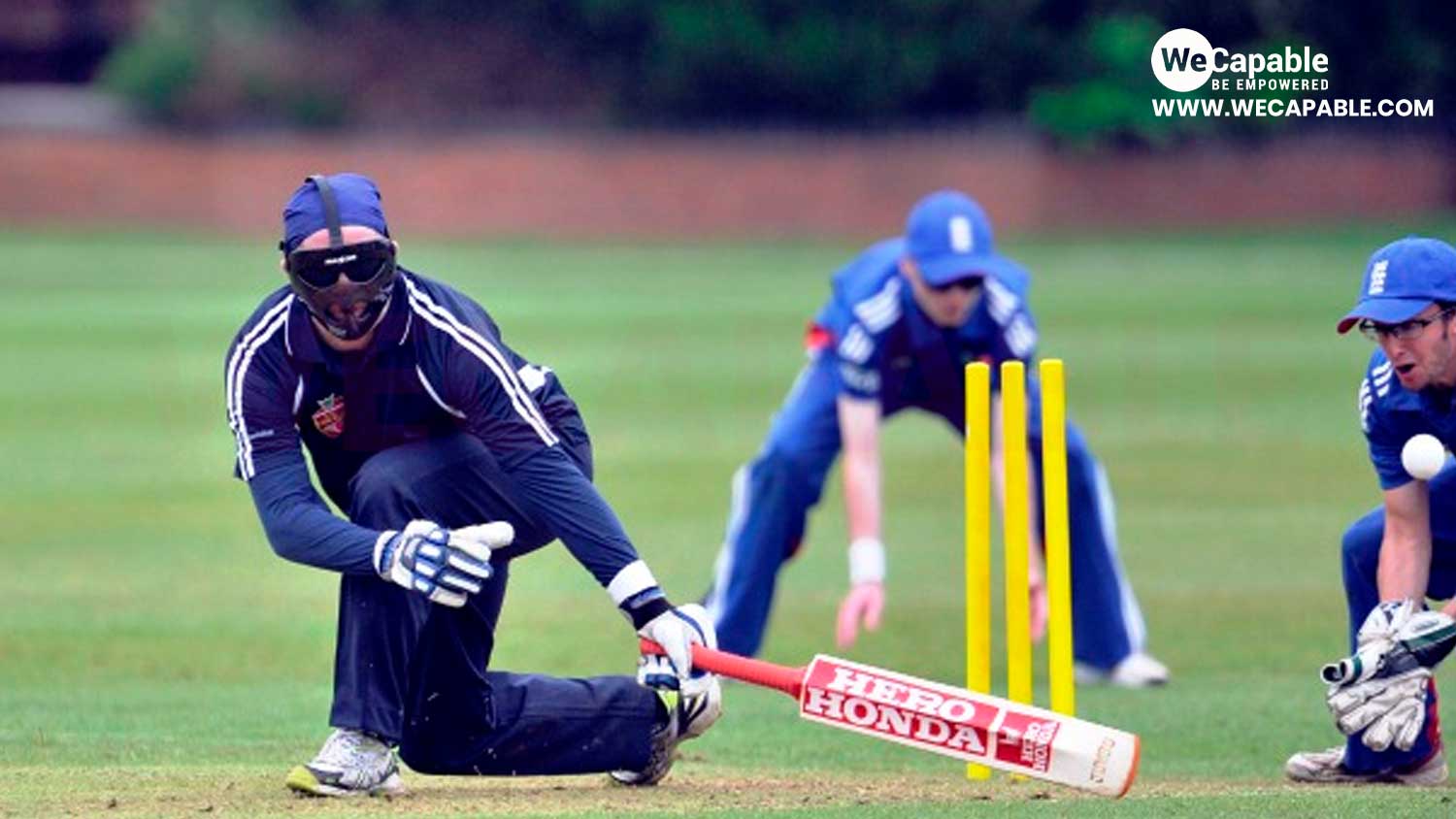Understanding the World of Blind Cricket
Blind cricket is a unique adaptation of the game that allows visually impaired athletes to play. While the basic concepts are similar, there are important modifications to accommodate different vision abilities. This blog will explore the classifications, rules, gameplay techniques and experience of blind cricket.
Enabling Participation through Categorization
Not all blind cricket players have the same level of vision. To promote fair competition and safety, there are three main categories based on sight ability: B1 (completely blind), B2 (partially blind) and B3 (partially sighted cricket players). Teams must include a certain number from each class. This systematic approach balances teams while enabling diverse abilities.

Adapted Equipment for Accessibility
Special equipment has been developed to aid different vision capabilities. The ball is larger with inner ball bearings cricket ball to make noise on motion. Additionally, the pitch has guideline markings visible to B3 players but not obstructing others. Wickets are also enlarged for better perception. These tactile adaptations remove barriers and allow full participation through the players’ other heightened senses.
Communication is Key
Clear verbal communication is especially important in blind cricket. Before bowling, the bowler must announce “Play.” Additionally, the wicketkeeper narrates the game, informing fielders where the ball is hit using a standardized vocabulary. This livens the listener’s experience while ensuring safety and fair gameplay for all involved. Effective communication has facilitated blind cricket’s growth into an inclusive sporting event.
Scoring Advantages for B1 Players
B1 players face unique challenges that the rules accommodate. Runs scored by a B1 batsman are doubled, incentivizing their participation. Additionally, a B1 fielder may catch the ball after one bounce for a dismissal rather than on the full. These targeted provisions aim to offer balanced scoring potential regardless of sight capacity.
Underarm Bowling Only
For safety reasons, bowling must always be underarm in blind cricket. Additionally, the bowler says “Play” and the ball must bounce at least twice before reaching a B1 batsman. This extra reaction time helps partially or completely blind batters adequately prepare. The underarm delivery also results in a slower, lower trajectory, allowing participants of all abilities a fair chance to connect.
Strategic Field Placement
The wicketkeeper becomes an even more pivotal player, directing other fielders to where the ball is struck based on sound. Placement depends on the batsman’s ability - more tightly for B1 batsmen relying on description and looser for B3 players. clever placements can result in run outs or direct catches. This fosters innovative strategy within the parameters of equitable gameplay.
Fulfilling Potential through Adaptation
By accounting for differences in vision yet maintaining the core cricket experience, blind cricket cultivates belonging and achievement. Participation is not limited by physical ability but based on a universal passion for the sport. Successful adaptations respect intrinsic worth and dignity of all people. The results show an intensely played game where athletes find joy, purpose and community through their talents. Blind cricket is a shining example of the power of reasonable accommodation and inclusion.
Promoting Awareness and Growth
As with any niche sporting event, growing awareness and interest helps ensure blind cricket’s future development and success. The Internet age offers new opportunities - Stories highlighting top players, exciting matches, and the unique gameplay help educate sighted audiences. Increased social media profiles assist with cultivating interest and respect. Financial support from charitable organizations and enthusiastic communities also enrich player experiences. Continued promotion helps blind cricket thrive.
A Future Filled with Possibility
With steady improvements and strong foundations laid, blind cricket’s potential seems limitless. Expanding international competitions and grassroots programs inspires more to participate. Advancements in aids like GPS-enabled smart balls may enhance accessibility. As understanding grows, so does support - both financially and through enthusiastic local fans. An inclusive sporting culture nurtured here sets an example for full community participation regardless of ability. With dedication and hearts open to diversity, blind cricket’s impact will only multiply. The greatest matches are still to be played.
